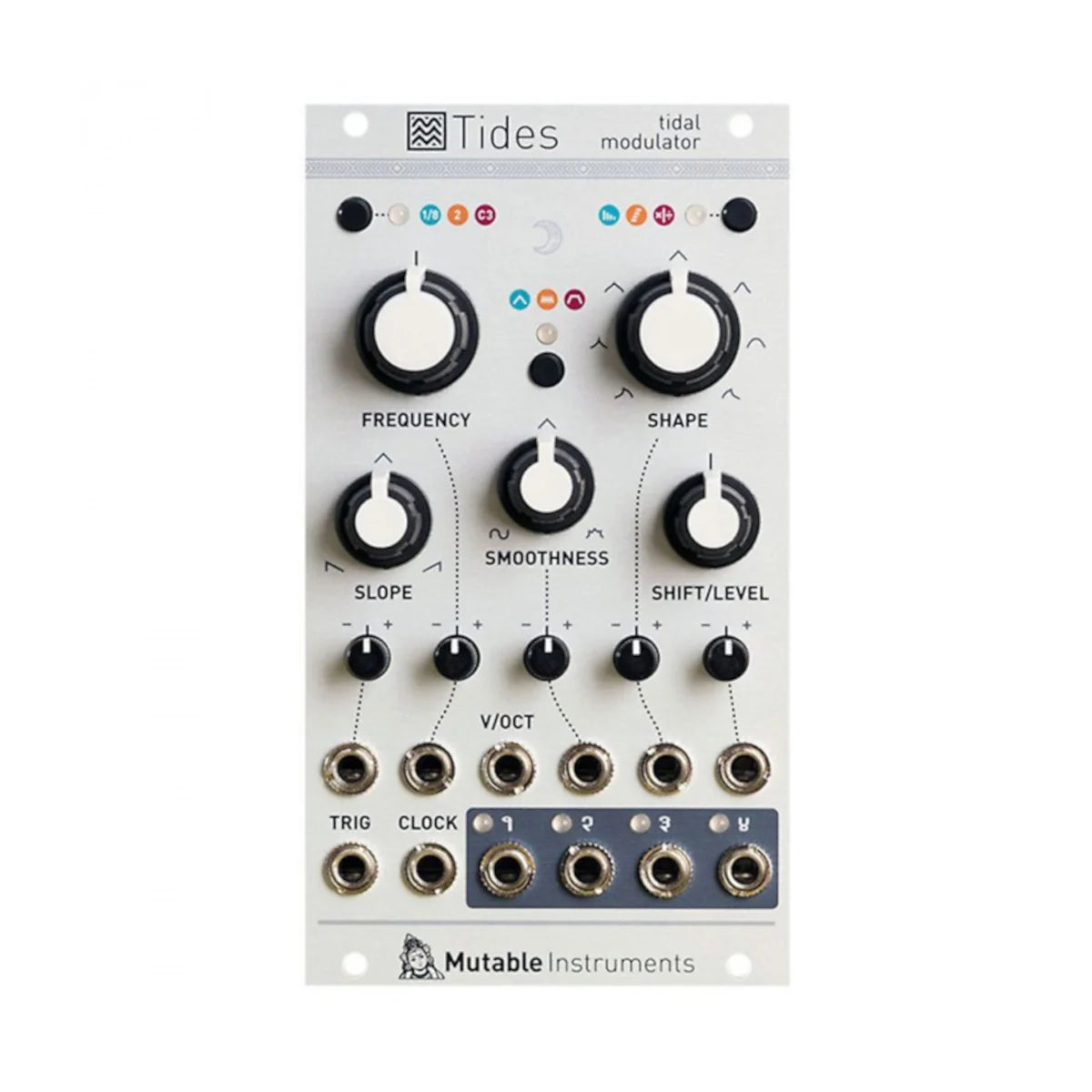Mutable Instruments Tides v2
Mutable Instruments Tides v2
Couldn't load pickup availability
Tides is all about waves that go up and down, from minute-long cycles to audio rates… This module is Mutable Instruments’ unique take on the looping AD envelope generator – pushing this well-known trope to unknown territories.
The core of the module is a digital asymmetric triangle function generator, which can be used in AD and AR modes (for envelope generation), or looping (as a VC-LFO or VC-DO).
The triangle generator is followed by a wavetable waveshaper providing linear, exponential, logarithmic, sinusoidal, or arc-sinusoidal shapes for the A and D segments. Then, a second processor applies either a 2-pole low-pass filter to the waveform, smoothing its sharp edges; or a rubbery wavefolder, adding kinks and bounces to the waveform.
POLYRHYTHMIC VARIATIONS
What sets this 2018 revision apart from its predecessor is the introduction of additional output modes, producing variations (shifted in amplitude, time, phase or frequency) of the main signal.
And of course, a redesign from scratch focused on accuracy and audio quality.
Digital function generator
- 3 operating mode: AD envelope, looping (VC-LFO/VCDO), AR envelope.
- 3 frequency ranges for the main frequency knob: low (2 minutes to 2 Hz), medium (0.125 Hz to 32 Hz), high (8 Hz to 2kHz). This range can be widened by applying an offset on the V/OCT input.
A large palette of waveforms
- Shape control with CV input – covering various combinations of linear, exponential, or sinusoidal segments.
- Slope/asymmetry (A/D time ratio) control with CV input.
- Smoothness control with CV input: smoothes the waveform using a 2-pole digital filter, or adds bumps and kinks with a digital wavefolder.
External clocking/PLL
- The module can use an external clock or clean audio signal as a reference, and operate at a multiple of this clock (from 1⁄16to 16x).
- This allows, for example, the generation of (sub)harmonics from another VCO.
4 output modes
- Different shapes. Each output produces a different waveshape: main signal (with voltage-controlled attenuverter), raw asymmetric triangle, end of attack gate, end of release gate.
- Different amplitudes: Voltage-controlled dispatching of the signal to each of the 4 outputs.
- Different times: Voltage-controlled phase or apex shifting of the signal.
- Different frequencies: Outputs 2, 3, and 4 are shifted up or down in frequency relatively to output 1, creating chords or polyrhythmic LFOs.
Specifications
- All inputs: 100k impedance, DC to 7.8kHz.
- SLOPE, SMOOTHNESS, SHAPE, SHIFT/LEVEL input range: +/- 8V.
- V/OCT input range: -3 to +7V.
- TRIG and CLOCK input range: 0 to +8V, protected.
- 16-bit CV capture.
- Internal processing: 32-bit floating point.
- CV Outputs: 14-bit, 62.5kHz (31.25kHz in different frequencies mode).
- Output levels: bipolar +/- 5V for cyclic signals; unipolar +8V for gates and envelopes.
Share

